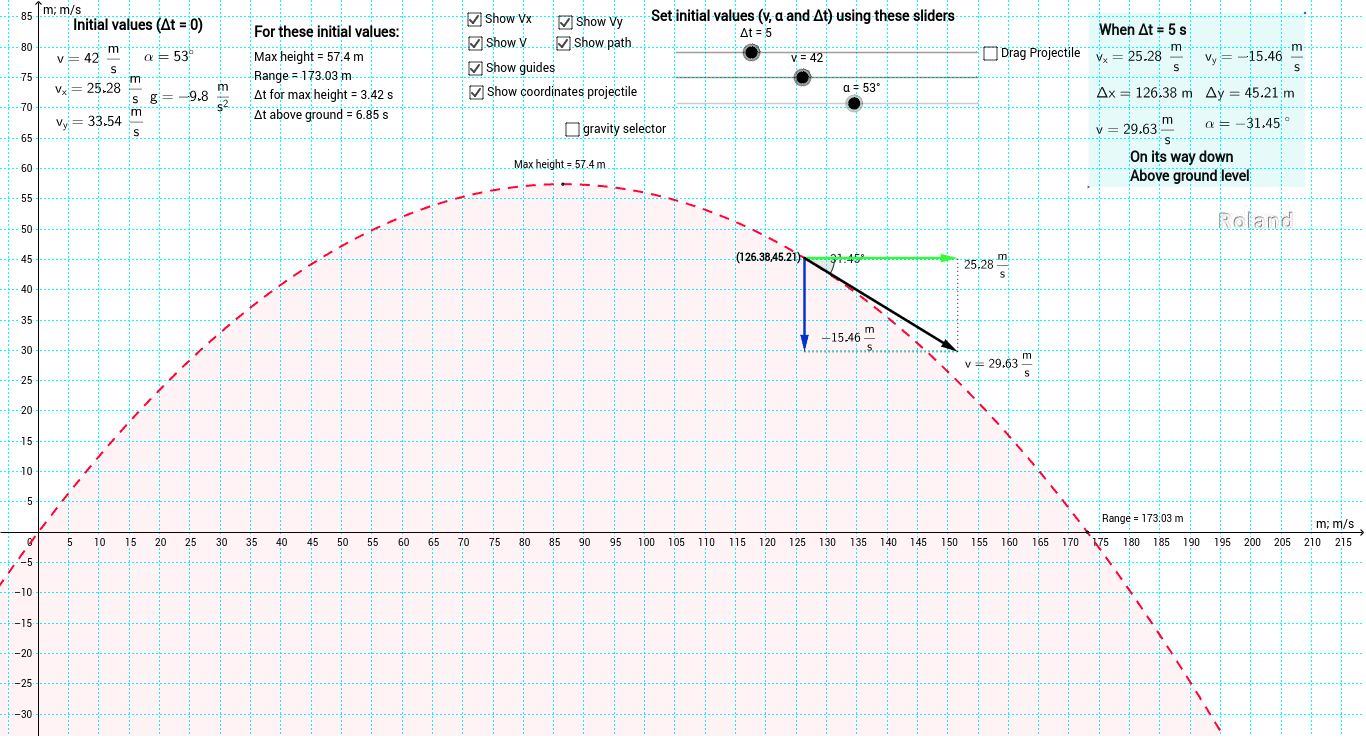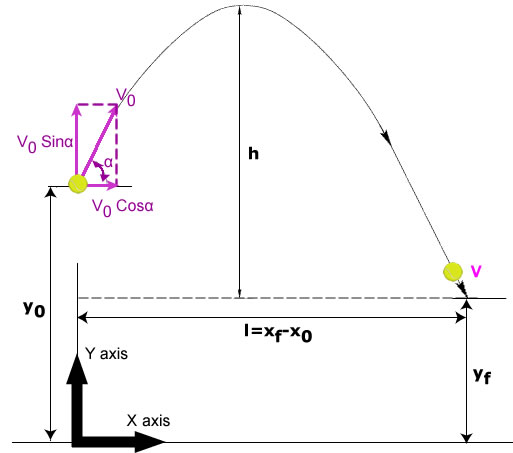

The acceleration remains the same for horizontal projectile motion
RAISED PROJECTILE MOTION CALCULATOR FREE
Speaking of acceleration, for a projectile motion there happens no acceleration in the horizontal plane whereas it happens in the vertical place as free fall due to gravity. Uy=usin Acceleration, velocity and displacement

Initial velocity is obtained during the launch of the projectile, which is usually shown as the components of x and y coordinates as, (b) How much work is required to raise a 100 g block to a height of 200 cm and simultaneously. X and y = coordinate positions or positions in space in x and y direction/component respectively = Angle of elevation during throw of the projectileĪx and ay = acceleration in x and y direction/component respectively Uy = initial velocity in y direction/component Ux = initial velocity in x direction/component v2 v20 + 2a(x x0) Table 5.1 Summary of Kinematic Equations (constant a) Where x is position, x0 is initial position, v is velocity, vavg is average velocity, t is time and a is acceleration. In the below formulas the terms used are as, It can be elevated or horizontal projectile motion. Let us see them one by one also describing their motion in their planes formulas, The equation for path of a projectile or its trajectory determines how the projectile moves from its. Most of these include both the vertical as well as the horizontal projectile motion data. The important properties of a projectile that comes under the topic of the equation of path of a projectile are the initial velocity, projectile’s time of flight, acceleration, velocity and displacement, the parabolic trajectory equation (already written above), the maximum height and the range of the projectile. Where on the right the horizontal projectile motion is shown with its vectors. To do this, we separate projectile motion into the two components of its motion, one along the horizontal axis and the other along the vertical.The x-component determines the horizontal velocity and other parameters of the projectile, whereas the y component determines the vertical velocity and other parameters of the projectile. Since vertical and horizontal motions are independent, we can analyze them separately, along perpendicular axes. Calculate the trajectory of a projectile. Keep in mind that if the cannon launched the ball with any vertical component to the velocity, the vertical displacements would not line up perfectly. Find the time of flight and impact velocity of a projectile that lands at a different height from that of launch. You can see that the cannonball in free fall falls at the same rate as the cannonball in projectile motion. The maximum height of the projectile is given by the formula: H v 0 2 s i n 2 2 g. If v is the initial velocity, g acceleration due to gravity and H maximum height in metres, angle of the initial velocity from the horizontal plane (radians or degrees).

Figure 5.28 compares a cannonball in free fall (in blue) to a cannonball launched horizontally in projectile motion (in red). The range of the projectile depends on the object’s initial velocity. We can use the linear equations of motion to calculate this. The most important concept in projectile motion is that horizontal and vertical motions are independent, meaning that they don’t influence one another. When the projectile reaches its maximum height its vertical component of velocity will be zero. Air resistance does significantly alter trajectory motion, but due to the difficulty in calculation, it is ignored in introductory physics. As an object travels through the air, it encounters a frictional force that slows its motion called air resistance. The object is called a projectile, and its path is called its trajectory. After the initial force that launches the object, it only experiences the force of gravity. Now we can calculate the range of the projectile, knowing that its horizontal velocity remains constant throughout the motion. Projectile motion is the motion of an object thrown (projected) into the air. Then, we take the square root to get the time of flight of the projectile (to two decimal places): 1.


 0 kommentar(er)
0 kommentar(er)
